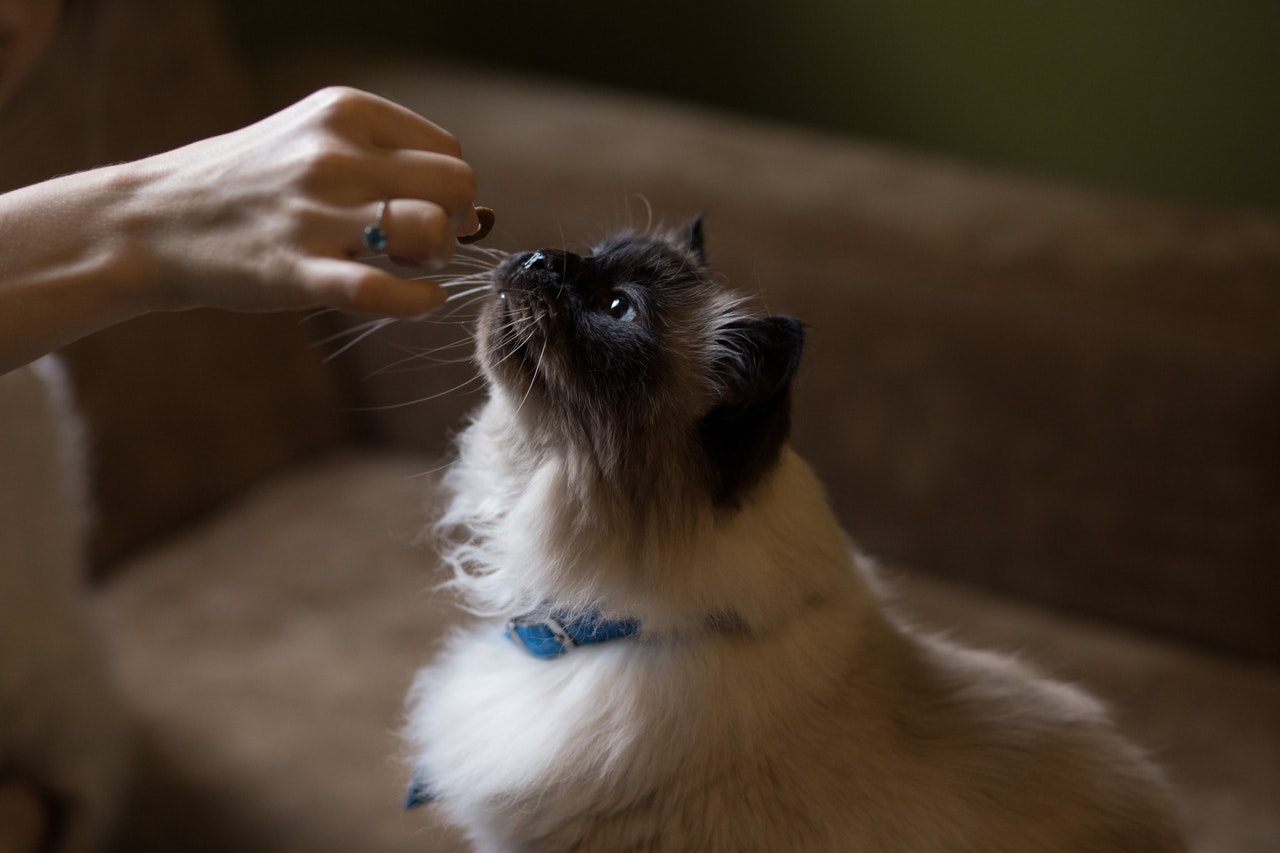
“Meow! Its feeding time again, human!”
There you go, opening the bag of dry kitty kibble, pouring quite a bit out onto the dish. Maybe that would satiate Fluffy’s appetite for quite a bit. When you return moments later… SURPRISE! Looks like only a quart or maybe half’s been eaten.
Not too long after, she comes and begs for more food. Being the kind person, you are, you oblige. But now that has got you thinking. How much food is too much?
Let’s look at how much you should feed your cat daily. We will cover both feeding schedules and the types of food.
Do you free feed your cats? This means giving your cats access to food as and when they please. While this sounds convenient, this could be wasteful as cats tend to leave food unfinished, leaving the sides near the feeding bowl untouched. Couple free feeding with inactivity from a cat that doesn’t have much stimulation around the house, that could lead to an unhealthy lifestyle, leading to obesity in cats.
How about the types of food you feed your cats? Many owners feed dry food as it is easier to store. They are also cheaper to buy, compared to wet or canned food. Feeding your cat dry food regularly is fine, if it meets your cat’s nutritional needs. What you should know though, is that your cat should stay hydrated when it goes on a dry food only diet. This helps your cat to clear off the toxins in its body and even prevent constipation.
Canned food on the other hand, is at least 70% water and can be served to complement dry food. Cats that are regularly fed canned food do not require as much water, as most of it will come from what they eat. What you should watch out for instead, is overeating. Cats find canned or wet food more palatable and go crazy when you open that can of fresh food for them.
So, let’s have a look at three different ways of feeding management you can do for your cat, as well as the pros and cons of each!
Meal Feeding
Meal Feeding refers to a regime where you will only feed your cat only during certain times of the day. Think of it as feeding your cat, Boot Camp style. You can feed both wet and dry food this way.
Kittens should be fed about three times a day. As it gets older, you can reduce it to once or twice per day. The frequency of feeding should correlate to its body weight; for wet food, about one 3-oz. can per 3 to 3 ½ lbs. of body weight. You should adjust this amount for dry food.
Pros: Meal Feeding allows you to keep watch on your cat’s food intake. This makes it easier to check and track if your cat has had a change in appetite. For a multi-cat household, this ensures that all cats will have equal access to food and keep a healthy, balanced diet.
Cons: Your cat might beg for food between mealtimes. Do not give in! Your cat cannot control how much it eats when food is available. However, if you are providing proper amounts of food regularly, you can be assured that your cat is receiving enough nourishment.
Free Feeding
If Meal Feeding isn’t what you feel is right for your cat, you can still opt to Free Feed it. Free Feeding means that food will always be left available to your cat at any given time of the day. However, this works best with dry food, as wet food loses its freshness and appeal to your cat after it gets left out in the open for a while.
Pros: Your cat can feed any time it prefers. This way, you do not have to constantly be on the alert on missing feeding schedules.
Cons: There is a possibility that a cat which does not ration its food properly will overeat. This may lead to weight gain and obesity.
Combination Feeding
Ah, the best of both worlds! Combination Feeding or Mixed Feeding refers to setting a fixed schedule for wet/canned food, while keeping dry food available always. Sounds like the ideal setup doesn’t it?
Pros: Combination Feeding lets your cat have multiple small meals a day as and when it likes. This feeding method also lets you gauge your cat’s appetite, seeing how it reacts to having wet food as it gets served.
Cons: Like Free Feeding, a cat that doesn’t learn to eat the dry food in small amounts throughout the day may overeat, leading to weight gain and obesity. Adding to the fact that there is dry and wet food, having its diet unchecked could lead to kidney issues.
These are generally methods you can adopt for healthy cats. But what about those with existing conditions such as diabetes or hyperthyroidism? You should seek the opinion of your preferred veterinarian to check if these feeding regimes are compatible with your cat before you start.
Ensure your cat gets enough food and water. With complete and balanced nutrition, you can be sure that your cat is happy and content for the years to come.






